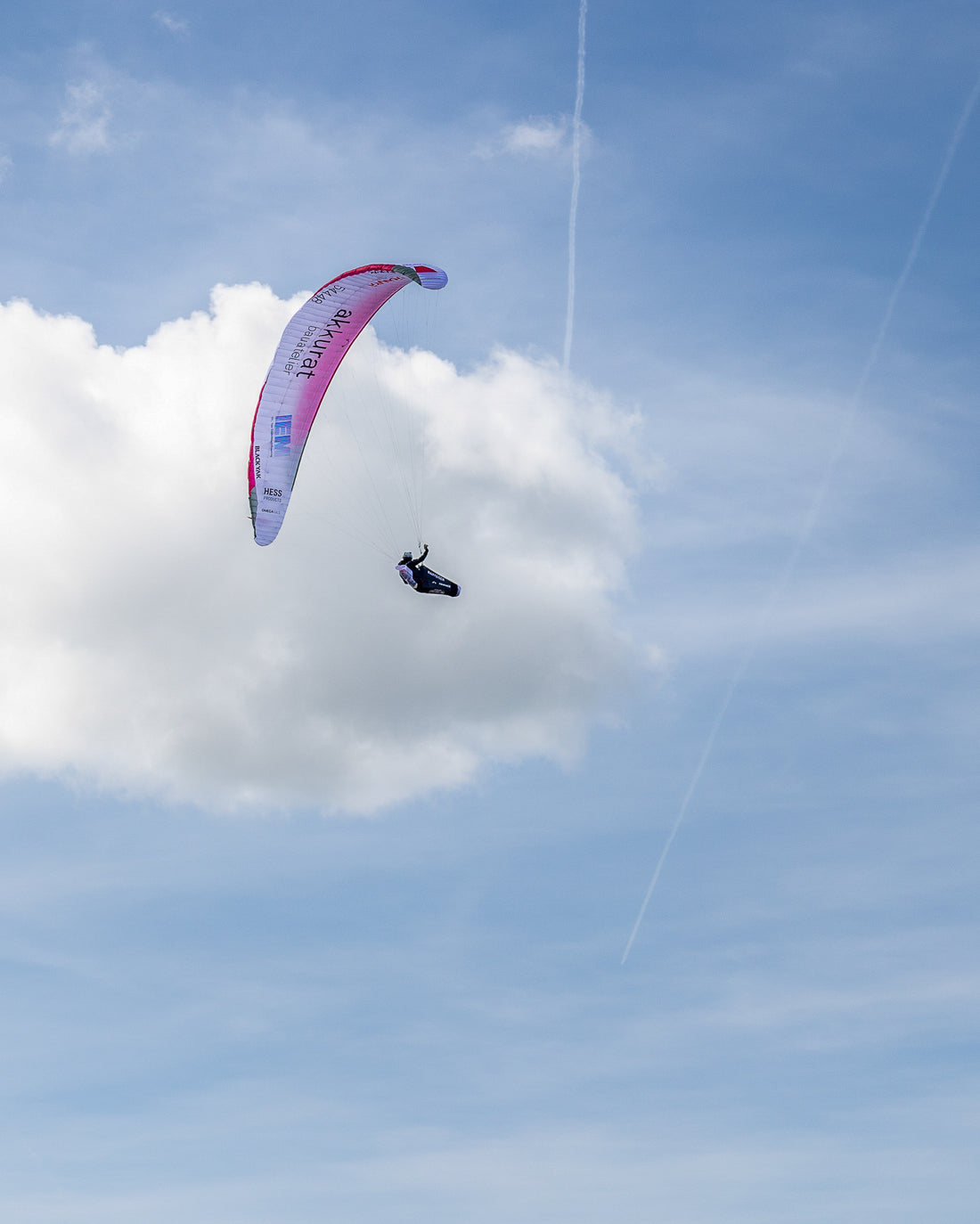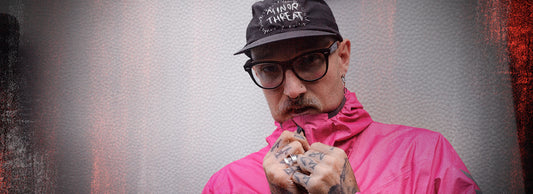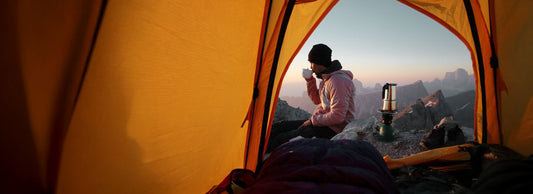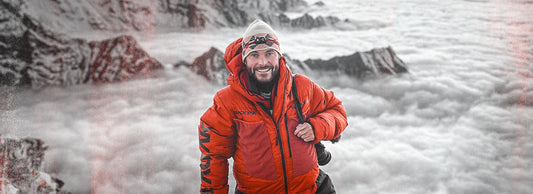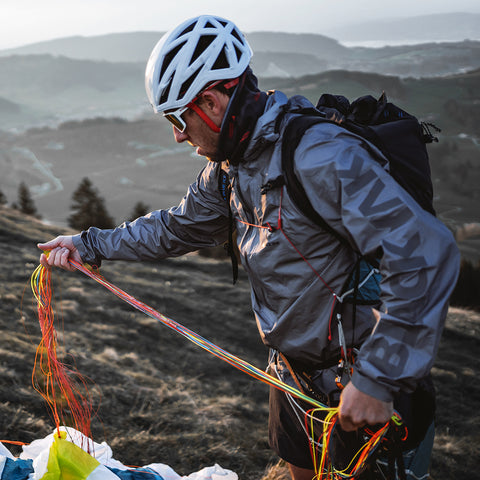Hike & Fly; the fascination of conquering the mountain on foot, carrying the paraglider up in your backpack so that you can glide weightlessly down into the valley. It is not the effortless descent that drives me to carry the paraglider up, but much more the moment of the take-off. The transition from the final step into the air is what keeps me going.

With the thought of someday flying down from the mountain and not having to walk, I started training in 2016. Now I even get to pursue my then newfound hobby as a career, and I also get to develop my own paraglider for the X-Alps while working.
Let's go back five years to 2018, when I set myself the goal of one day competing in the toughest paragliding adventure race in the world. At that time, I couldn't imagine being allowed to go to the start of X-Alps as an athlete one day. I had a lot of tasks and skills ahead of me that I still had to learn and improve. Step by step, I learned everything and physically prepared my body for the big goal. After all, the X-Alps are no walk in the park. If you have read my recent blog posts, you might already have an idea of what this is all about.

The X-Alps
The race is organized every two years and this year is the 11th edition. The basic idea was to get from Salzburg across the Alps to Monaco, hike & fly style. The route that the athletes had to cover each time changed from year to year and became steadily longer. This year the direct route is 1,223 km. The athletes must pass 15 turning points and the finish line will not be Monaco this year, but Zell am See. There are turning points where a signature must be given on the ground and others which you have to pass while flying or running in a certain circle around the turning point.
There are many more rules that must be followed. For example, the night rest of seven hours, which starts between 21-23 o'clock and ends between 4-6 o'clock in the morning. Once a night with less rest can be taken, then the so called "Nightpass" is needed. In addition, during the night rest the athletes are not allowed to move more than 250 meters from the last reached point of the previous day.
During the day it is allowed to fly between 6-21 o'clock, before or after that it is necessary to run/ walk. The minimum equipment (such as paraglider, emergency parachute, helmet, cell phone, emergency material) must always be carried by the athlete. However, supporters of the athletes are allowed to bring clothes, food, drinks, etc. to the mountain.
These are the basic rules of the competition. If you want to know more, you can find all the info at redbullxalps.com.

Hike & Fly
Hike & Fly means for me in relation to the X-Alps of course not only to fly down the mountain, but to fly away from the mountain. In good thermal conditions you can quickly fly up to 250 km. But that requires the appropriate paraglider. In my case this is a 2.9 kg high performance competition glider. My seat, in which I actually lie rather than sit, is including the emergency parachute 2 kg and for its weight so comfortable that I can fly several hours.
For running, the 50-liter backpack is comfortable enough that I can wear it all day and has enough room for an insulated jacket like the BAKOSI or a shell jacket like the JAVARI GTX.

In mountaineering, the focus is more on the tour than on the flight. So I can fall back on other equipment, which is much smaller and lighter. In return, the flight down to the valley is correspondingly shorter. During the X-Alps, however, I am not allowed to change paragliders, which is why the X-Alps equipment is not so light.

But what always remains the same is flying. No matter if long or short, it's like riding a bike down the mountain. Because in order to stay in the air with a paraglider, we need a speed of 30-40 km/h. This means that we as pilots are always exposed to a certain amount of airflow. So that I don't get cold during short flights, I wear the LUNAG GORE-TEX 3L ACTIVE SHELL PANT and the JAVARI GORE-TEX 3L ACTIVE SHELL JACKET. These keep the wind out and it is enough to wear a thin midlayer underneath, such as the CHUMBU FLEECE ¾ ZIP. For long flights it is also important to wear a good insulation layer. This is where I rely on layering. For the pants I also wear the LATOK ISOLATION PANT and for the jackets I prefer, during competitions, the BAKOSI G2 or on cold winter days the BURNAG HOODED DOWNJACKET.

During my training, I always try to go through the processes the same way so that they eventually become automated. I always pack my backpack the same way and quickly notice when I test new clothes that have a different packing volume than the clothes before. One of the biggest challenges when it comes to clothing is to always have the best combination of layers with me, if possible, yet none too many. Because every gram counts. Right now, I'm busy getting everything ready for the big X-Alps project and assessing what else I'll need for the adventure.
If you want to follow our team during the X-Alps, you can do so with the live tracking on the X-Alps website. But beware, it can be addictive!

